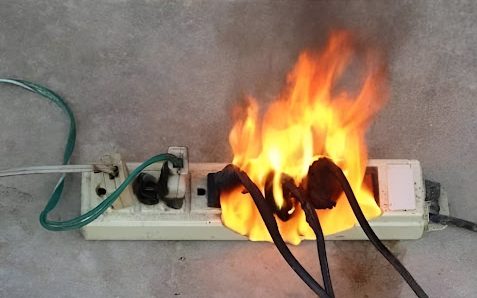Never Plug These 9 Items Into a Power Strip
Introduction
Power strips make it easy to connect multiple devices, but not all appliances are safe to plug into them. Overloading a power strip can lead to overheating, tripped breakers, or even fires.
To keep your home safe, here are 9 items you should never plug into a power strip — and safer alternatives to use instead.
1. Refrigerators and Freezers
-
These appliances require steady, high-voltage power.
-
Plugging them into a power strip can cause voltage drops and potential compressor damage.
-
Always use a dedicated wall outlet.
2. Microwaves
-
Microwaves draw a lot of power when in use.
-
Power strips can overheat under this load, posing a fire hazard.
3. Space Heaters
-
Space heaters are among the top causes of power strip fires.
-
Their high wattage should always be connected directly to a wall outlet.
4. Hair Dryers and Hair Irons
-
These beauty tools use intense heat and power.
-
A power strip may overheat or short-circuit.
5. Coffee Makers and Toasters
-
Kitchen appliances with heating elements should never share a strip.
-
They can overload circuits, especially when used simultaneously.
6. Washing Machines and Dryers
-
These appliances pull large amounts of current during operation.
-
They should always have their own outlet to avoid tripping breakers.
7. Air Conditioners
-
Portable or window A/C units draw continuous high power.
-
A power strip can’t handle the load and may cause overheating.
8. Dishwashers
-
Dishwashers use water and heat — a risky combination with overloaded strips.
-
Always plug into a grounded, dedicated outlet.
9. Power Strips or Extension Cords (Daisy-Chaining)
-
Plugging one power strip into another multiplies the risk of overload.
-
This is a major fire hazard and should always be avoided.
Tips for Safe Power Strip Use
-
Use only UL-listed power strips with surge protection.
-
Never exceed the wattage rating of the strip.
-
Avoid running power strips under rugs or in damp areas.
-
For high-wattage appliances, always plug directly into the wall.
Conclusion
Power strips are handy for low-power electronics like lamps, phone chargers, or laptops, but they’re not designed for heavy-duty appliances. Knowing what not to plug in is one of the easiest ways to prevent electrical fires and damagein your home
